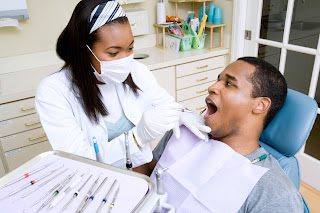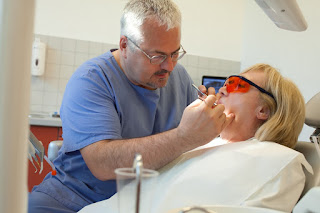
Personal Hygiene Affects Wellbeing
The question is what special oral problems should you be aware of as an adult? 10 oral problems & solutions confirm the importance of keeping a bright, healthy smile throughout adulthood to old age is to practise proper oral hygiene. Find below nagging 10 oral problems & solutions that will help keep your teeth in healthy condition for years to come.
Bad Breath
Bad breath in my book deserves the No.1 slot in 10 oral problems & solutions. Bad breath is unpleasant, distinctive, or offensive. It could be a result of poor mouth hygiene. For instance, tooth decay, gum disease, food debris on the tongue, or plaque, can cause bad breath. Regular brushing, tongue scraping, and flossing will take care of bad breath from poor oral hygiene.
However, diet can also cause bad breath. If your food consists mainly of high starchy, sugary type, then you’re likely to suffer from bad breath. Changing your diet to a nutritionally balanced one can help in removing this problem.
Another cause of bad breath is strong spicy food which though offensive, is only temporary. This is because a good brushing with minty toothpaste, chewing a piece of minty sugarless gum, or sucking any fresh-breath mints, will remove this bad breath instantly.
Lastly, internal disorders will produce specific characteristic fruity or faecal smell to the breath. This is a normal sign of ketoacidosis, such as diabetic ketoacidosis, a potentially life-threatening condition. The breath may also have an ammonia-like odour, smells urine-like, or fishy in people with chronic kidney failure. Seeing your dentist every six months can help identify diseases in their earliest stages. Also, a once in 3 months scaling and polishing of your teeth is recommended.
Gum Disease
Gum disease is reversible in the early stage. Symptoms of gingivitis include red, swollen or tender gums that tend to bleed when you brush them. Bad diet, poor oral hygiene, diabetes, heart disease, cancer, stress, and smoking are contributing factors to gum disease.
If you notice any of these symptoms consult your dentist immediately. In order to prevent gum disease in the first place, ensure you brush twice a day and floss daily. In addition, schedule scaling and polishing every three or six months at the latest. You may also need to pencil down regular dental checks to ensure early detection and treatment of gum disease.
It is a fact that a healthy diet is vital for healthy teeth and gums. When you eat a well-balanced diet, you are giving your gum tissues and teeth the important nutrients and minerals they need to stay strong and resist infections. In addition, firm fibrous foods such as fruits and vegetables tend to help clean the teeth and tissues.

Cavities
Cavities around existing fillings are referred to as recurrent decay. And this decay on the root surfaces of the teeth becomes more regular as we age. Hence, it’s important to brush with fluoride toothpaste, floss daily, and consult your dentist frequently.
Sensitivity
Sensitivity can be a growing problem as you age. Your gums naturally recede over time, exposing areas of the tooth that are not protected by enamel. These areas are particularly prone to pain due to cold or hot foods or beverages. In severe cases, cold air, as well as sensitivity to sour and sweet drinks and foods can occur.
If you experience sensitivity, try anti-sensitivity toothpaste like Sensodyne toothpaste. If the problem persists, see your dentist. This is to make certain that the sensitivity is not an indication of a more serious condition such as a cavity or a cracked or fractured tooth.
Crowns
Crowns are used to strengthen damaged teeth. A crown entirely covers a damaged tooth. Apart from strengthening a damaged tooth, a crown can be used to improve the appearance, shape, or alignment. Implants and bridges are used to replace missing ones. Bridges span the space where the teeth are missing and cemented to the natural teeth, or implants surrounding the empty space. Dental implants replace one or more teeth or are used to attach full or partial dentures.
Cavities And Decay
You may still face certain problems when it comes to oral health as you get into your senior years. For instance, cavities and decay on the root surfaces of the teeth are more common in older adults. So, brushing with fluoride toothpaste, flossing, and dentist visits must go on.
There are also existing health conditions such as diabetes, heart disease, or cancer which can affect your oral health. It is wise to let your dentist know of any general health problems you’re facing. Although dentures can make life easier for many seniors, they do need special care. Follow your dentist’s directives sensibly and see your dentist if there’s any need to. A once-a-year check-up is endorsed for long-term denture wearers.
Another common problem in old citizens is dry mouth. This may be caused by certain medications or medical disorders. If left untreated, it can damage your teeth. Your dentist should be able to recommend different methods to restore moisture in your mouth, as well as other treatments to help prevent the problems related to dry mouth.
Periodontal Disease
10 oral problems & solutions include the possibility of getting a periodontal disease from lack of proper teeth cleaning. Possible effects of periodontal disease are increased risk of heart disease or stroke. This is where flossing comes in. Aside, from the risk of periodontal disease, flossing keeps your teeth fresh and promotes fresh breath.
And if you need step-by-step flossing, this is it. Use a piece of floss about 18 inches long. Run most of the floss around a forefinger, and the rest around the other forefinger, leaving enough floss to insert between the teeth using a back-and-forth motion. Guide the floss to the gum line and curve the floss into a C-shape. Slide it into the space between the gum and tooth until you feel light resistance.
Repeat this process between every tooth, not forgetting the teeth located at the back of the mouth. Don’t be disappointed if you don’t see food particles. The primary function of dental floss is really to remove the invisible film of bacteria that always forms between the teeth, causing plaque.
Plaque Deposits
Plaque soon forms around the gum baseline if you do not brush properly. Proper brushing takes at least two minutes. Most of us don’t come close to brushing for 120 seconds. Use a stopwatch to get an idea of what 2 minutes is. For a proper brushing, use short, tender strokes, concentrating on the gumline, difficult-to-reach back teeth, and areas around fillings, crowns or other areas worked on.
Coffee/Tobacco-Stained
10 oral problems & solutions provide suggestions for coffee/tobacco-stained teeth. One solution is to have scale and polish once every three or six months by a dentist. The dentist will remove most external stains caused by food, tobacco, coffee, or tea.
Whitening toothpaste may also help remove these surface stains between the teeth, or you may decide to have your teeth professionally whitened to remove the more stubborn external stains. As regards internal stains, these can be bleached, bonded or crowned. Your dentist should be able to recommend suitable treatment depending on the state of your teeth and expectations.
Tooth Bleaching
And if your desire is a whiter set of teeth, bleaching is one of the options for getting a bright smile. Tooth bleaching safely lightens the colour of the teeth, lasting for five years. There are many reasons for wanting whiter teeth. But whatever the reasons, tooth bleaching is no more the exclusive privilege of celebrities.
Is bleaching for you?
The most effective and safest method of tooth bleaching is dentist-supervised. Also generally, bleaching is successful in at least 90% of patients. Tooth bleaching may not be an option for everyone and only consider it if your teeth are darkened from age, coffee, tea, or smoking. Teeth darkened with the colour yellow, brown, or orange respond better to bleaching.
Other types of grey stains caused by fluorosis, smoking, or tetracycline are lightened, but the results are not as astounding. If you have very sensitive teeth, periodontal disease, or teeth with worn enamel, your dentist may discourage bleaching.
What is involved and how long does it last?
The dentist will, first of all, evaluate your candidacy for tooth bleaching and what type of bleaching process would give the best results. If you are in a hurry for whiter teeth, you may decide to have your teeth lightened immediately. Your dentist will use either an in-office bleaching process or laser bleaching while you sit in the dentist’s chair. Or you may decide to try an at-home bleaching pack, which is cheaper and provides the same results but is a bit of a bother.
The lightness of the stain should last from one to five years, depending on your personal habits such as smoking and drinking coffee and tea. At this point, you may choose to get a touch-up. The treatment time is also much shorter than the original treatment time.
Is it safe? Any side effects?
Several studies, in the past years, proved bleach to be safe and effective, though some patients may experience slight gum irritation or tooth sensitivity, which goes away after the treatment. Another anxiety is that bleaching may weaken the teeth, but not enough data to support this.
What are realistic expectations?
It’s difficult to guess how much lighter your teeth will become. Every case is different. Typically, there is a two-shade improvement as seen on a dentist’s shade guide. The success rate depends on the type of stain you have. For instance, bleaching can only provide a shift in colour from grey to a lighter shade of grey. Also, don’t expect bleaching to lighten the artificial materials used in fillings or crowns.
https://www.webmd.com/oral-health/guide/oral-health-symptoms-types
Photo Credit: Creative Commons.











